- Home
- Peter Ackroyd
Rebellion: The History of England from James I to the Glorious Revolution
Rebellion: The History of England from James I to the Glorious Revolution Read online
The author and publisher have provided this e-book to you for your personal use only. You may not make this e-book publicly available in any way. Copyright infringement is against the law. If you believe the copy of this e-book you are reading infringes on the author’s copyright, please notify the publisher at: us.macmillanusa.com/piracy.
Contents
Title Page
Copyright Notice
List of illustrations
1. A new Solomon
2. The plot
3. The beacons
4. The god of money
5. The angel
6. The vapours
7. What news?
8. A Bohemian tragedy
9. The Spanish travellers
10. An interlude
11. Vivat rex
12. A fall from grace
13. Take that slime away
14. I am the man
15. The crack of doom
16. The shrimp
17. Sudden flashings
18. Venture all
19. A great and dangerous treason
20. Madness and fury
21. A world of change
22. Worse and worse news
23. A world of mischief
24. Neither hot nor cold
25. The gates of hell
26. The women of war
27. The face of God
28. The mansion house of liberty
29. A game to play
30. To kill a king
31. This house to be let
32. Fear and trembling
33. Healing and settling
34. Is it possible?
35. The young gentleman
36. Oh, prodigious change!
37. On the road
38. To rise and piss
39. And not dead yet?
40. The true force
41. Hot news
42. New infirmities
43. Or at the Cock?
44. Noise rhymes to noise
45. The Protestant wind
Photographs
Further reading
Index
Also by Peter Ackroyd
Copyright
List of illustrations
1. James I of England and James VI of Scotland (John de Critz the Elder / Mary Evans Picture Library)
2. Anne of Denmark, James’s spouse (c.1605–10, Gheeraerts, Marcus (c.1561–1635) (attr. to)) / Woburn Abbey, Bedfordshire, UK / Bridgeman Images)
3. James in front of his lords, temporal and spiritual (Mary Evans Picture Library / Everett Collection)
4. The title page of the King James Bible (© Photo Researchers / Mary Evans Picture Library)
5. The title page of John Milton’s Areopagitica (Mary Evans Picture Library)
6. George Villiers, 1st duke of Buckingham (Mary Evans / Iberfoto)
7. Henry, prince of Wales (Oliver, Isaac (c.1565–1617) / Fitzwilliam Museum, University of Cambridge, UK / Bridgeman Images)
8. The future Charles I, as prince of Wales (Royal Armouries, Leeds, UK / Bridgeman Images)
9. Elizabeth, daughter of James I (Private Collection / Bridgeman Images)
10. Charles I and his wife, Henrietta Maria (Alinari Archives, Florence – Reproduced with the permission of Ministero per I Beni e le Attivit … Cu)
11. Three out of seven of Charles I’s children, painted by Anthony Van Dyck (Alinari Archives, Florence – Reproduced with the permission of Ministero per I Beni e le Attivit … Cu)
12. A disapproving illustration of the Rump Parliament (Interfoto / Sammlung Rauch / Mary Evans Picture Library)
13. What the Cavaliers are supposed to have done with the Puritans (Mary Evans Picture Library)
14. Thomas Wentworth, 1st earl of Strafford (Sir Anthony Van Dyck, / Private Collection / Bridgeman Images)
15. A plan of the Battle of Naseby (Mary Evans Picture Library)
16. Prince Rupert of the Rhine (© Bolton Museum and Art Gallery, Lancashire, UK / Bridgeman Images)
17. The trial of Charles I in Westminster Hall (Mary Evans Picture Library)
18. Charles I’s death warrant (Interfoto / Sammlung Rauch / Mary Evans Picture Library)
19. Oliver Cromwell (Robert Walker / Leeds Museums and Galleries (Leeds Art Gallery) U.K. / Bridgeman Images)
20. A contemporary tapestry celebrating the restoration of Charles II (© The Holburne Museum of Art, Bath, UK)
21. Charles II (Sir Peter Lely / © Belvoir Castle, Leicestershire, UK / Bridgeman Images)
22. Catherine of Braganza, the wife of Charles II (Mary Evans / BeBa / Iberfoto)
23. Barbara Villiers, duchess of Cleveland (after Sir Peter Lely / © Geffrye Museum, London, UK / Bridgeman Images)
24. Nell Gwynne (studio of Sir Peter Lely / Sudbury Hall, Derbyshire, UK / National Trust Photographic Library / John Hammond / Bridgeman Images)
25. Louise de Kérouaille, Charles’s French mistress (Mary Evans / Epic / Tallandier)
26. The earl of Rochester (Sir Peter Lely / Private Collection / The Stapleton Collection / Bridgeman Images)
27. Samuel Pepys (Sir Godfrey Kneller / Royal Society of Arts, London, UK / Bridgeman Images)
28. Sir Christopher Wren (Interfoto / Friedrich / Mary Evans)
29. Sir Isaac Newton (Mary Evans Picture Library / Imagno)
30. Charles II in his role as patron of the Royal Society (Private Collection / The Stapleton Collection / Bridgeman Images)
31. The members of the ‘Cabal’ (Sir John Baptist de Medina / Private Collection / De Agostini Picture Library / Bridgeman Images)
32. The duke of Monmouth (Private Collection / Photo © Philip Mould Ltd, London / Bridgeman Images)
33. The duke of York, soon to become James II, with his wife and daughters (Pierre Mignard / Royal Collection Trust © Her Majesty Queen Elizabeth II, 2014 / Bridgeman Images)
34. The covert arrival of an infant, to be passed off as James II’s son (Private Collection / Bridgeman Images)
35. James Francis Edward Stuart as a baby with his mother, Mary of Modena (Benedetto Gennari the Younger / Private Collection / Photo © Philip Mould Ltd, London / Bridgeman Images)
36. James II throwing the great seal into the Thames (Mary Evans Picture Library)
1
A new Solomon
Sir Robert Carey rode furiously from London to Edinburgh along the Great North Road, spending one night in Yorkshire and another in Northumberland; he arrived at Holyrood Palace, ‘be-bloodied with great falls and bruises’ after a journey of more than 330 miles. It was late at night on Saturday 26 March 1603. He was ushered into the presence of King James VI of Scotland and, falling to his knees, proclaimed him to be ‘King of England, France and Ireland’. He gave him as testimony a sapphire ring that his sister, Lady Scrope, had thrown to him from a window at Richmond Palace immediately after the death of Elizabeth I. ‘I have’, he told his new sovereign, ‘a blue ring from a fair lady.’
‘It is enough,’ James said. ‘I know by this you are a true messenger.’ The king had previously entrusted this ring to Lady Scrope in the event of the queen’s death.
A body of prelates and peers had already met Sir Robert Cecil, the principal councillor of the old queen, at Whitehall Gate before they proceeded with him to the cross at Cheapside where Cecil proclaimed James as king; bonfires and bells greeted the news of the swift and easy succession. Cecil himself declared that he had ‘steered King James’s ship into the right harbour, without cross of wave or tide that could have overturned a cock-boat’. The councillor had entere
d a secret correspondence with James before Elizabeth’s death; he had urged the Scottish king to nourish ‘a heart of adamant in a world of feathers’.
On 5 April James left Edinburgh to travel to his new realm. He had been the king of Scotland for thirty-six years, ever since he had assumed the throne at the age of thirteen months after the forced abdication of his mother Mary Queen of Scots. He had been a successful if not a glorious monarch, managing to curb the pretensions of an argumentative clergy and of a fractious nobility. From his earliest years the restive and combative spirit of the Scottish lords ensured that, in the words of the French ambassador, he had been nourished in fear. Yet he had by guile and compromise held on to his crown. Now, as he told his followers, he was about to enter the Land of Promise. He had already written to the council at Westminster, asking for money; he did not have the funds to finance his journey south.
The king did not perhaps expect so effusive and jubilant a welcome from his new subjects. He recalled later how ‘the people of all sorts rid and ran, nay rather flew to meet me’. They came to gaze at him, since none of them had experienced the rule of a male monarch. He himself was impressed by the prosperity of the land and by the evident wealth of its rulers. He said later that the first three years of his reign were ‘as a Christmas’. It took him a month to reach London, largely because he wished to avoid the funeral of his predecessor. He had no great fondness for Elizabeth; she had prevaricated over his right to the succession and, perhaps more significantly, had ordered the execution of his mother.
He reached York by the middle of April, where Cecil came to greet him. ‘Though you be but a little man,’ the king told him, ‘we shall surely load your shoulders with business.’ At Newark-on-Trent he gave orders that a cutpurse, preying upon his retinue, should summarily be hanged; he had not properly been informed on the provisions of English common law. It is an indication that he was still, in many important respects, a foreigner. At Burghley-by-Stamford he fell from his horse and broke his collar bone. Slowly he made his way to London. For three or four days he rested in Hertfordshire at Robert Cecil’s country home, Theobalds House, at which seat he took pleasure in creating many knights.
He was so generous with titles that he was accused of improvidence. The reign of Elizabeth witnessed the creation of 878 knights; in the first four months of the king’s rule, some 906 new men were awarded that honour. The queen had knighted those whom she considered to be of genuine merit or importance; James merely considered knighthood to be a mark of status. He was said to have knighted a piece of beef with the words ‘Arise, Sir Loin’. On another occasion he did not catch the name of the recipient and said, ‘Prithee, rise up, and call thyself Sir What Thou Wilt.’ Other titles could be purchased with cash. The diminution in the importance of honour marks one of the first changes to the old Tudor system.
Those who were permitted into the king’s presence may not have been entirely impressed. He was awkward and hesitant in manner; his legs were slightly bowed and his gait erratic, perhaps the consequence of rickets acquired in childhood. One admittedly hostile witness, Sir Anthony Weldon, also described him as forever ‘fiddling about his codpiece’.
He was a robust and fluent conversationalist, who rather liked to hear the sound of his own voice, but the effect upon his English audience was perhaps impaired by the fact that he retained a broad Scots accent. If he was eager to talk, he was also quick to laugh. He could be witty, but delivered his droll remarks in a grave and serious voice. His manners were not impeccable, and he was said to have slobbered over his food and drink. He paid little attention to his dress, but favoured thickly padded doublets that might impede an assassin’s dagger; ever since his childhood he had lived in fear of assault or murder. He was said to have a horror of naked steel. He had a restless, roving eye; he paid particular notice to those at court who were not known to him.
On 7 May he rode towards London, but was greeted 4 miles outside the city by the lord mayor and innumerable citizens. He lodged at the Charterhouse for four nights, and then made his way to the Tower, where he remained for a few days. While staying in the royal apartments he began an excited tour of his capital, ‘secretly in his coach and by water’, as one contemporary put it; he was particularly struck by the sight of the crown jewels, held at the palace in Whitehall. Here was the glittering and unmistakable evidence of his new-found wealth.
Yet London was not a pleasure-dome. Even as he approached it, the plague began its secret ministry in the streets and alleys; by the end of the summer it had claimed the lives of 30,000 citizens. A grand state entry had been planned for 25 July, the day of the coronation, but the fear of infected crowds curtailed the ceremony; there would be a crowning, but no state procession.
Even in these early months of the reign conspiracies began to mount against his throne. A group of gentlemen, among them Sir Walter Raleigh and Henry Brooke, Lord Cobham, were suspected of a scheme to depose James and to replace him with his cousin Arabella Stuart; like most conspiracies it was plagued by rumour, indecision and premature disclosure. Raleigh was arrested and consigned to the Tower, where two weeks later he attempted suicide; at his subsequent trial he was denounced by the attorney general, Sir Edward Coke, as ‘a spider of hell’.
Raleigh: You speak indiscreetly, barbarously and uncivilly.
Coke: I want words sufficient to express thy viperous treasons.
Raleigh: You want words, indeed, for you have spoken the one thing half a dozen times.
This was the end of what was called ‘the Main Plot’. A ‘Bye Plot’ was also discovered, whereby the king was to be kidnapped by priests and forced to suspend the laws against Roman Catholics. It came to nothing, of course, except for the deaths of the principals engaged in it.
The time had come for the formal, if subdued, coronation of the king; the archbishop of Canterbury performed the ceremony expeditiously in the sight of an invited audience. James’s consort, Anne of Denmark, agreed to receive her crown from the archbishop; as a Catholic, however, she refused to partake of Protestant communion. Being of a complaisant and gregarious disposition she caused very little trouble for the rest of her husband’s reign. Her chaplain once remarked that ‘the king himself was a very chaste man, and there was little in the queen to make him uxorious; yet they did love as well as man and wife could do, not conversing together’. After the ceremony the royal family left pestilential London for the healthier air of the country. James and Anne made their first ‘progress’ in the August of the year, making their way to Winchester and Southampton before turning north into Oxfordshire; in this, they were following the fashion of the king’s illustrious predecessor.
James had already established, however, the foundations of his court and council. In particular he took care to reward his Scottish nobles with the most prominent positions in his personal retinue. The centre of his rule lay in the royal bedchamber, which was almost wholly staffed by the entourage that had followed him from his native land. This was a source of much discontent and disquiet among the English courtiers; it was said that the Scottish lords stood like mountains between the beams of the king’s grace and themselves. Yet a new privy chamber was also established, half of Scots and half of English; the king revelled in his role as ‘the pacifier’, and this equal pairing evinced his moderation.
Among the English councillors the palm was awarded to Sir Robert Cecil and to the Howards. Henry Howard, earl of Northampton, was appointed as lord warden of the cinque ports at the beginning of 1604 and, a year later, lord privy seal; in the previous reign he had sent what James called ‘Asiatic and endless volumes’ of advice to Edinburgh. Thomas Howard, earl of Suffolk, was lord chamberlain. Cecil, soon to become Viscount Cranborne and then earl of Salisbury, was in fact pre-eminent; he was very small, with a hunched back, but he stood above the others. The king had told him that ‘before God I count you the best servant that ever I had, albeit you be but a beagle’. He often addressed him as ‘my little beagle’. Cecil managed
parliament, and the revenues; he supervised Ireland and all foreign affairs. He was forever industrious, highly efficient and always courteous; he had borne with patience all the humiliating remarks about his appearance and physique. He was the ultimate civil servant and his cousin, Francis Bacon, once said of him that he might prevent public affairs getting worse but could not make them any better. That is perhaps too harsh; Cecil had so great a political intelligence that he may qualify as a statesman. Snapping at his heels, however, was Henry Howard.
Elizabeth’s council had comprised some thirteen members; James soon doubled its size, but took great pleasure in avoiding its meetings. He favoured private deliberations, in the seclusion of his bedchamber, where he could then delegate responsibility. He preferred intimate meetings where his wit and common sense could compensate for his lack of dignity. He did not particularly like London in any case, and always preferred to go hunting in the countryside beyond; from this vantage James once wrote a complacent letter to his councillors, imagining them to be ‘frying in the pains of purgatory’ upon royal business. Yet he made quick and sudden visits to the capital, when his presence was deemed to be indispensable; he said that he came ‘like a flash of lightning, both in going, staying there, and returning’.
The palace of Whitehall was a straggling complex of some 1,400 rooms, closets and galleries and chambers huddled together. It was a place of secrets and of clandestine meetings, of staged encounters and sudden quarrels. This is the proper setting for John Donne’s satires as well as for Ben Jonson’s two Roman plays on the nature of ambition and corruption. It is also the setting for the great age of the masque. A ball, or a comedy, was staged every other day.
Yet the court is also the most significant context for the collection of Thomas Howard, earl of Arundel, which came to include the architectural drawings of Palladio as well as the work of Holbein, Raphael and Dürer. The great lords and courtiers also built elaborate houses at Audley End, Hatfield and elsewhere. The earl of Northampton furnished his house in the Strand with Turkish carpets, Brussels tapestries and Chinese porcelain; he also owned globes, and maps of all the principal nations. This is the burgeoning world of Jacobeanism.

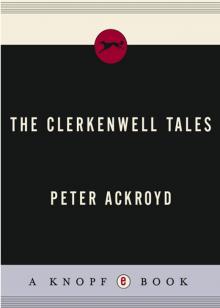 The Clerkenwell Tales
The Clerkenwell Tales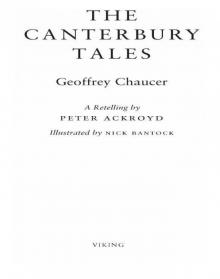 The Canterbury Tales
The Canterbury Tales J. M. W. Turner
J. M. W. Turner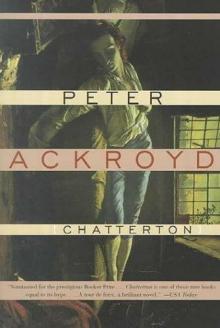 Chatterton
Chatterton The Canterbury Tales – A Retelling
The Canterbury Tales – A Retelling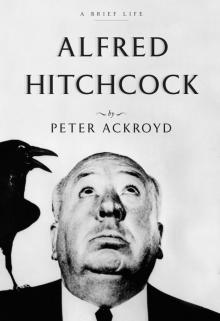 Alfred Hitchcock
Alfred Hitchcock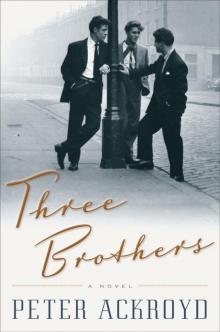 Three Brothers
Three Brothers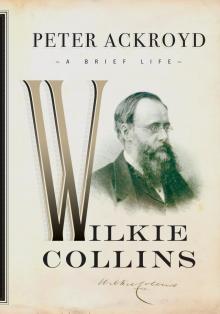 Wilkie Collins
Wilkie Collins Venice
Venice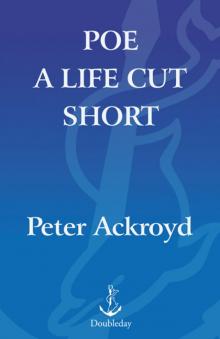 Poe
Poe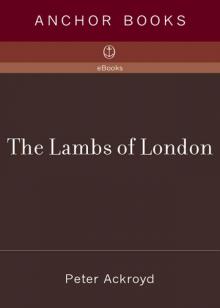 The Lambs of London
The Lambs of London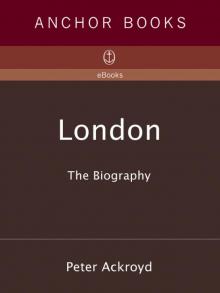 London
London Queer City
Queer City Revolution, a History of England, Volume 4
Revolution, a History of England, Volume 4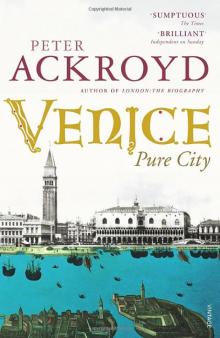 Venice: Pure City
Venice: Pure City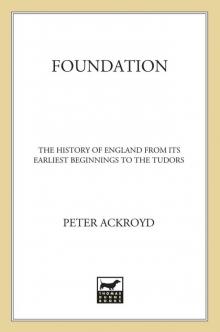 Foundation
Foundation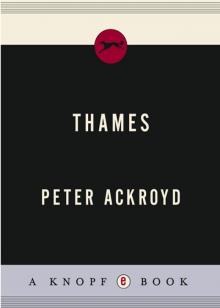 Thames
Thames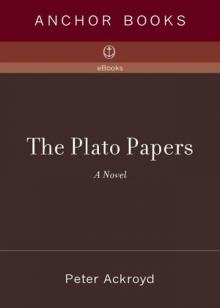 The Plato Papers
The Plato Papers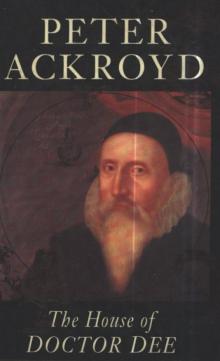 The house of Doctor Dee
The house of Doctor Dee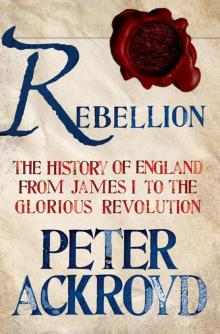 Rebellion: The History of England from James I to the Glorious Revolution
Rebellion: The History of England from James I to the Glorious Revolution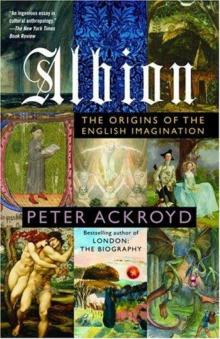 Albion: The Origins of the English Imagination
Albion: The Origins of the English Imagination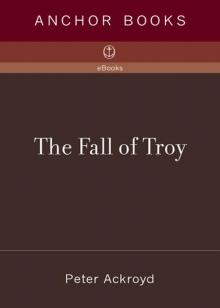 The Fall of Troy
The Fall of Troy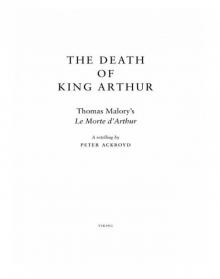 The Death of King Arthur
The Death of King Arthur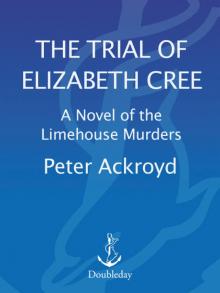 The Trial of Elizabeth Cree
The Trial of Elizabeth Cree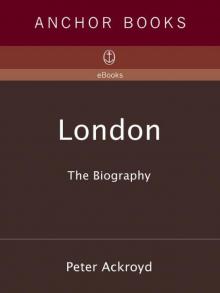 London: The Biography
London: The Biography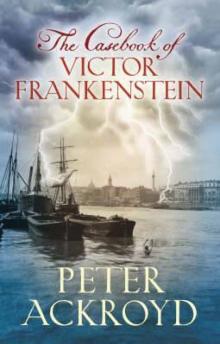 The Casebook of Victor Frankenstein
The Casebook of Victor Frankenstein Hawksmoor
Hawksmoor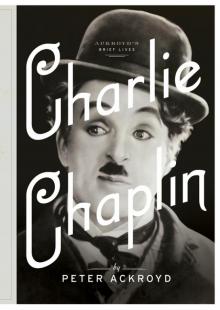 Charlie Chaplin
Charlie Chaplin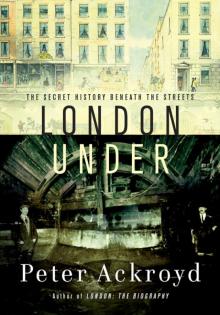 London Under
London Under